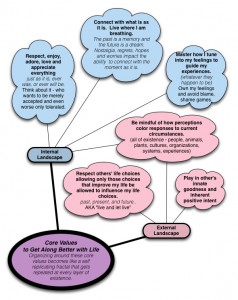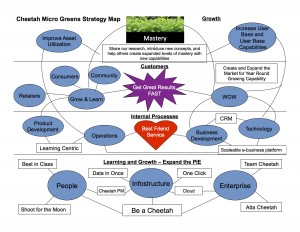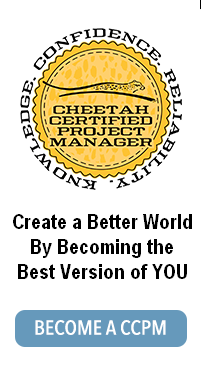High Performing Business – Discernment – Balance
Tuesday, November 8th, 2016Michelle LaBrosse, CCPM, PMP, PMI-ACP, RYT
When things feel out of balance, life seems to send you what you need to bring it back into balance. I learned this lesson in my early 20’s when I burned the candle at both ends working hard and playing hard. To make the time to rest, I’d be forced into it with a nasty sore throat. Once I realized the message in this sore throat – I found ways to get more rest so I would not have to suffer from the sore throat mandatory rest requirement. My sore throats became a thing of the past as I brought my life into balance.
I see the same things playing out in numerous other ways running this business. When things get out of balance, just as I’m starting to discern things need to shift to bring things back into balance, some external event happens that forces the business back into balance. Balance means many things in this business:
- Staff is contributing in ways that are bringing value balanced with the rewards they are receiving.
- New efforts are generating sufficient rewards to continue their pursuit.
- The energy to sustain a process is commensuarte with the value received from the process (like the accounting processes).
- Strategic associations bring value aligned with the level of effort to sustain them.
Developing deeper discernment happens over time with running the business – it happens in part with the measurements put in place to judge the performance of our efforts, but it also comes from the experiences developed with running the business. Experience can be another word for “mistakes.” Learning from the mistakes is crucial to improve discernment of what is required to keep the business in balance.
The biggest challenges I see organizations face with staying in balance is when they replace senior staff with lower cost junior staff not realizing the level of discernment and balance the senior staffer’s perspective brings to their operation. They essentially weaken their core. While I’d like to promote some level of a Cheetah Learning course that can improve the discernment of lower cost junior staff member, it’s really about learning the ins and outs of running a business – which well, comes from running a business. Yes it is important to earn the requisite credentials of your craft – the the CCPM and PMP certifications for project managers. AND put in the actual time to develop the experience on the ground that makes the difference in developing the discernment required to keep an operation balanced and performing. One of the ways to tell this with respect to project managers is to see for how long they have maintained their credential – a project manager who as maintained their PMP credential for several decades has far more discernment in running effective projects than someone early in their career who just earns their PMP credential.
One of the reasons Cheetah Learning continues to be the rock solid business that it is – we run the company in a way that we have very little turn over (with both employees and clients). We help our Cheetah students who have earned their PMP’s maintain their credential by offering valuable follow on training that can help them master additional skills, at cheetah speed. We test out new people in the periphery of the business on a new initiative to see how they perform in a myriad of situations before bringing them into the main team. We make sure our core with which we maintain balance is strong and wide so not much tilts us one way or the other. The leadership group that runs the business works on the business as well as works in the business so they have the discernment required to know when things need a slight modification here or there to keep things running at peak performance. This has helped us weather a wide variety of external threats and enables us to stay the market leader in the Project Management training space world wide.











